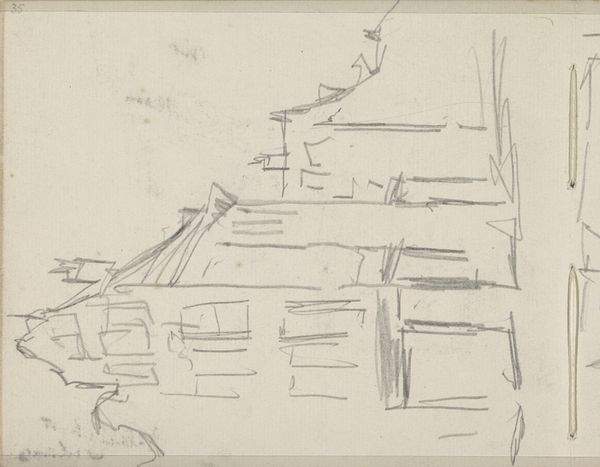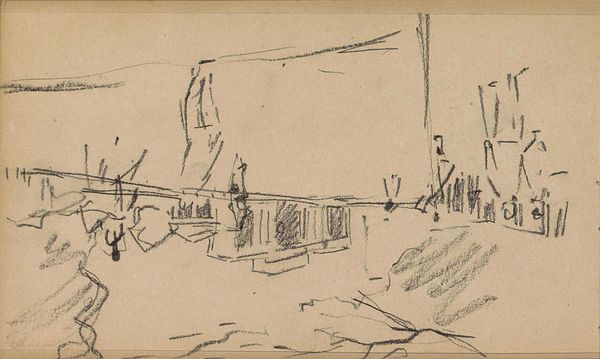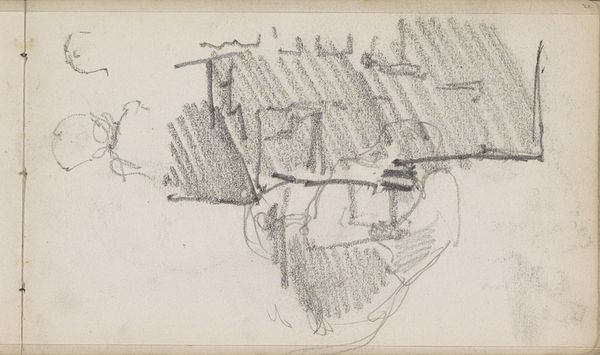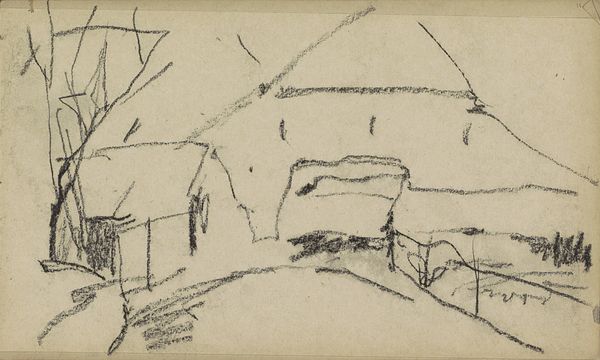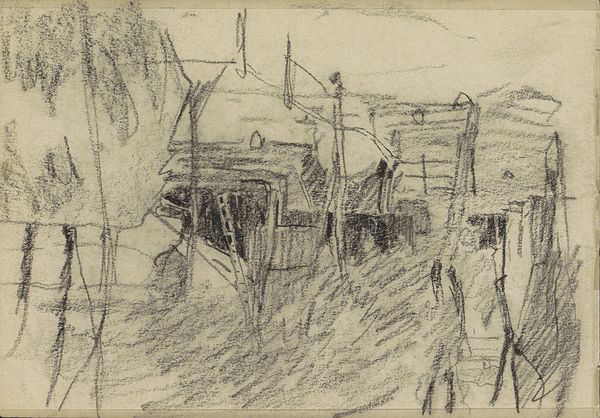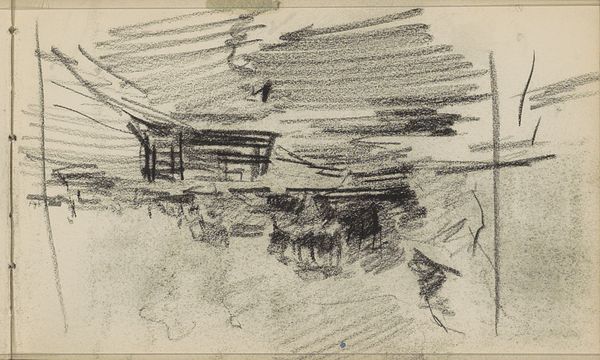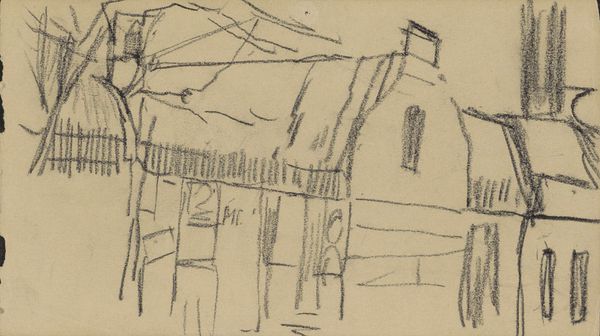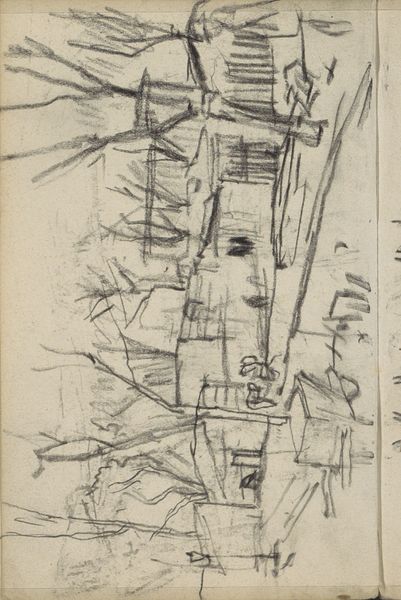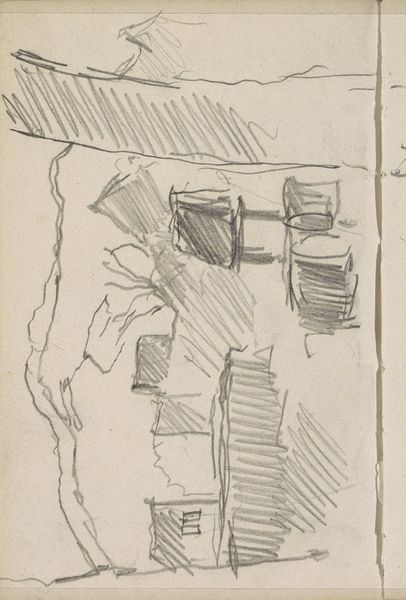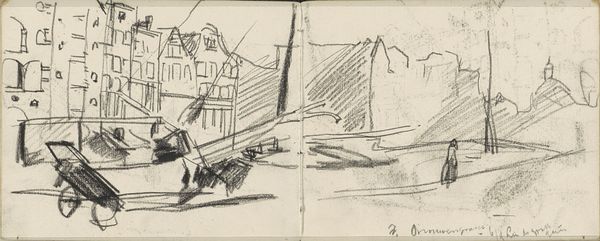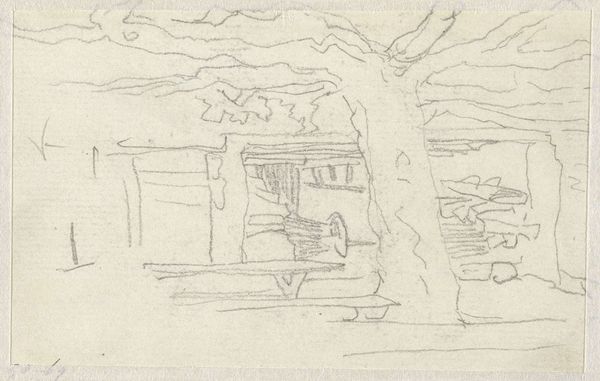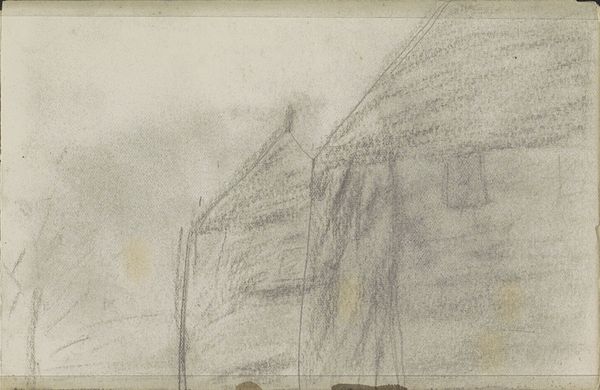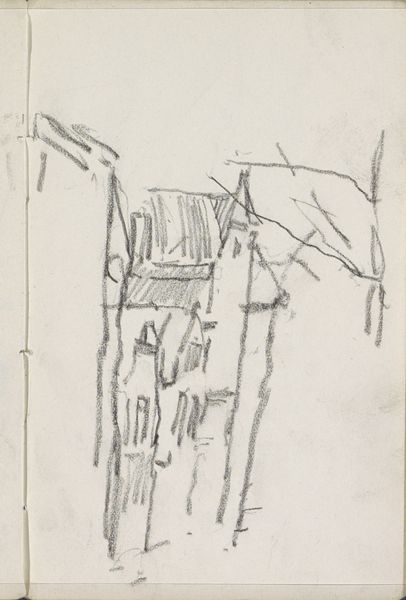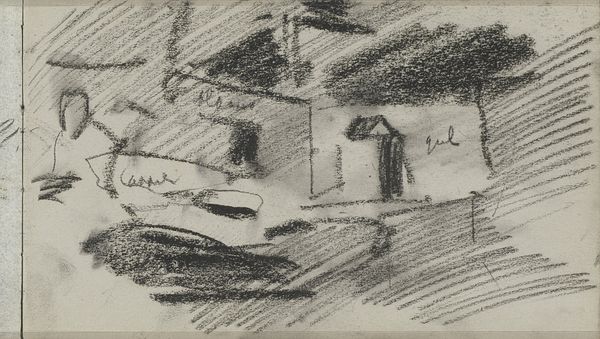
Gezicht op een straat met figuren, mogelijk te Wijk bij Duurstede 1906 - 1907
0:00
0:00
Copyright: Rijks Museum: Open Domain
Editor: So, this pencil drawing is titled *Gezicht op een straat met figuren, mogelijk te Wijk bij Duurstede*, or *View of a street with figures, possibly at Wijk bij Duurstede*, created around 1906 or 1907 by Willem Witsen. The hurried, almost blurry, quality of the pencil strokes really gives the impression of capturing a fleeting moment in time. What do you see in this piece from a historical perspective? Curator: The sketch immediately makes me consider the rise of urbanism in the late 19th and early 20th centuries, and the role artists played in documenting and, in some ways, shaping the public’s perception of the modern city. Think about the context. Witsen was working during a time of massive social change; the Netherlands was industrializing and cities were growing exponentially. How might this sketch reflect or react to those changes? Editor: I hadn't thought about it that way. The looseness now reads less like a quick sketch and more like a deliberate choice, contrasting perhaps the old, quieter Dutch cities and the burgeoning modernization, like a way of representing a sort of chaos? Curator: Precisely! And consider how the artistic institutions of the time - academies, salons, galleries - either embraced or rejected such representations of modern life. Impressionism, though initially controversial, was gaining acceptance, offering a new visual language for expressing contemporary experiences. Is it simply an objective record, or is Witsen making a statement about the rapidly evolving social landscape of the Netherlands? Editor: That makes a lot of sense. So by choosing to represent this street in this quick, almost unfinished way, he’s perhaps subtly commenting on the pace of change itself? It wasn’t something I immediately considered, but placing it within the broader context of urbanisation definitely reframes the piece. Curator: Exactly. Thinking about the politics of imagery, of how certain scenes are deemed worthy of representation and how that representation affects public opinion is crucial to how we understand not only the artwork itself, but the society that produced it. Editor: This was really enlightening. It goes to show, there's always more to art than what immediately meets the eye. Curator: Indeed. And that deeper understanding often lies in examining the historical currents shaping both the artwork and its reception.
Comments
No comments
Be the first to comment and join the conversation on the ultimate creative platform.
